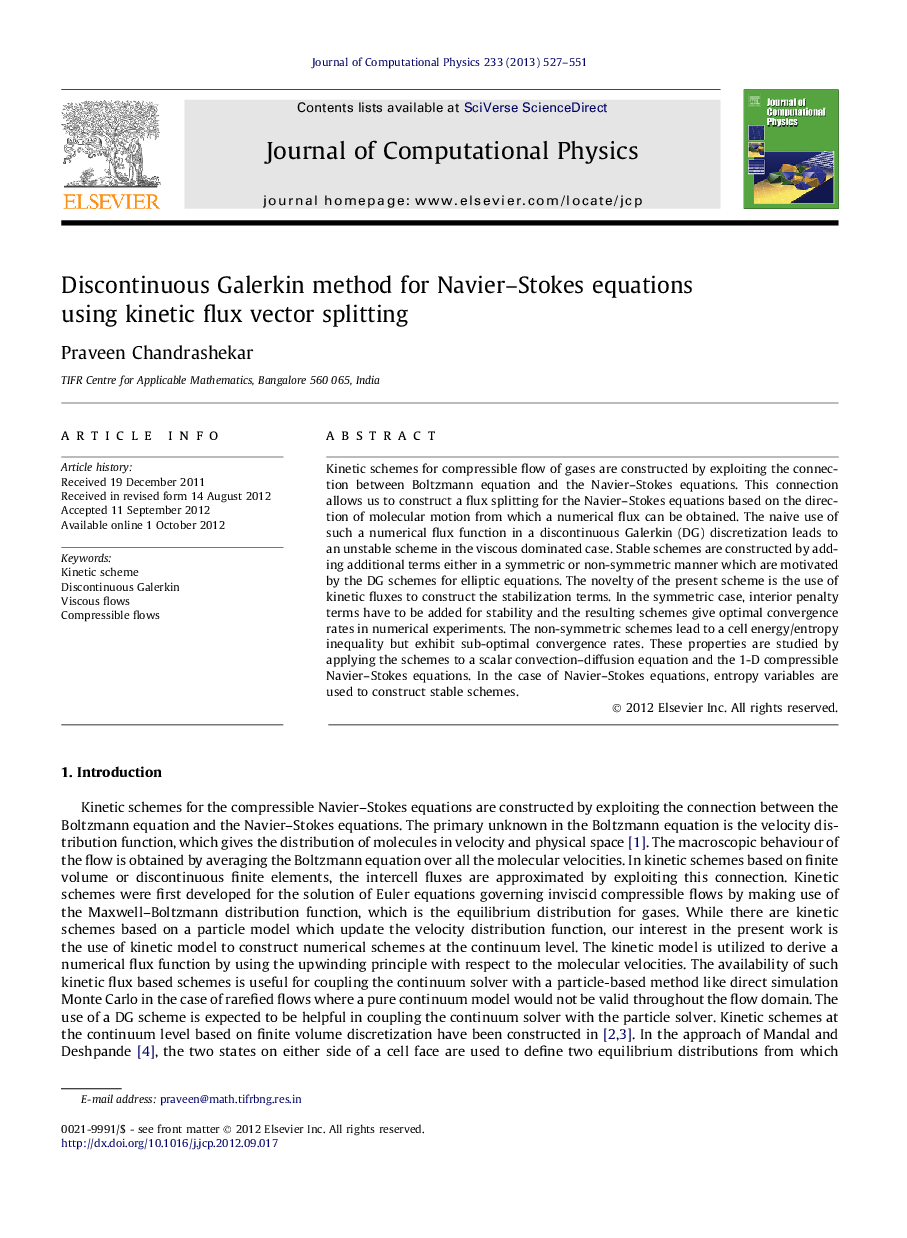| Article ID | Journal | Published Year | Pages | File Type |
|---|---|---|---|---|
| 518787 | Journal of Computational Physics | 2013 | 25 Pages |
Kinetic schemes for compressible flow of gases are constructed by exploiting the connection between Boltzmann equation and the Navier–Stokes equations. This connection allows us to construct a flux splitting for the Navier–Stokes equations based on the direction of molecular motion from which a numerical flux can be obtained. The naive use of such a numerical flux function in a discontinuous Galerkin (DG) discretization leads to an unstable scheme in the viscous dominated case. Stable schemes are constructed by adding additional terms either in a symmetric or non-symmetric manner which are motivated by the DG schemes for elliptic equations. The novelty of the present scheme is the use of kinetic fluxes to construct the stabilization terms. In the symmetric case, interior penalty terms have to be added for stability and the resulting schemes give optimal convergence rates in numerical experiments. The non-symmetric schemes lead to a cell energy/entropy inequality but exhibit sub-optimal convergence rates. These properties are studied by applying the schemes to a scalar convection–diffusion equation and the 1-D compressible Navier–Stokes equations. In the case of Navier–Stokes equations, entropy variables are used to construct stable schemes.
